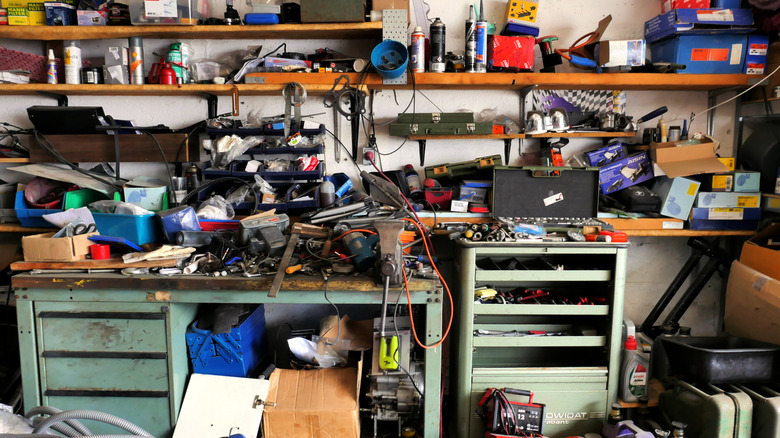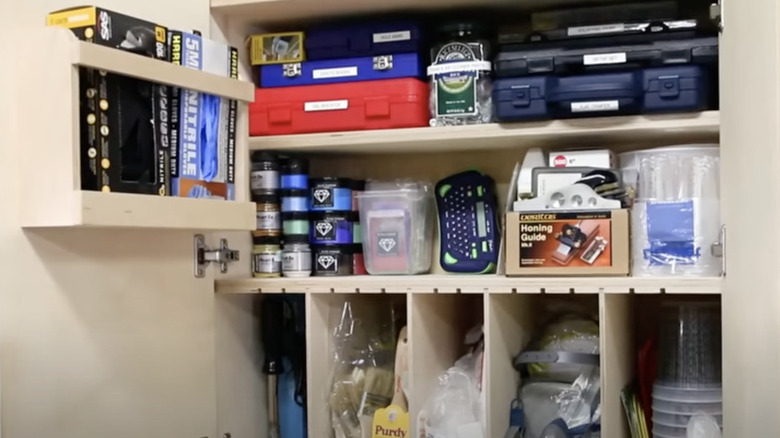This DIY Wall Cabinet System Offers An Abundance Of Storage Space For Tools & More
We may receive a commission on purchases made from links.
There are many ways to store tools, accessories, finishes, and consumables. For example, leading brand DeWalt has some of the best tool organizers money can buy. But they have two drawbacks: They're not cheap, and somehow they never quite seem to be exactly what you need.
The solution is to DIY a cabinet system to your own specifications. These use simple joinery techniques that you can quickly master even if you're relatively new to woodworking. They can also be achieved with a modest set of tools. Although having a table saw will certainly make life easier, a handheld circular saw will do (or even a jigsaw in a pinch). A wood router would also be handy. Additionally, you'll want a cordless drill/driver and a pocket hole jig (pocket hole jigs from Kreg are widely regarded as the best, but others are available). A Kreg shelf pin jig is also useful, but you could do without it.
In terms of materials and supplies, you'll want some ¾-inch and ¼-inch plywood, door hinges, cabinet handles (although you could make your own), shelf pins, screws, and strong wood glue. All of these should be available at your local hardware store. You're going to build wall cabinets similar to those you might buy for a kitchen, except these are going to be stronger and way more versatile.
Customize each cabinet exactly how you need it
The whole process is described in a detailed YouTube video by Fix This Build That, but basically, the cabinets are simple boxes made using pocket hole joinery. It's fast and easy and results in a rigid construction. There's plenty of information online if this method is new to you. The main carcass, shelves, and doors use ¾-inch plywood, which is thick enough to resist distortion under load. The ¼-inch plywood can be used for the back and internal dividers. All the pieces can be cut on a table saw, as can any slots. With care, these can also be done with a handheld saw and a wood router.
One of the big advantages of this design is it provides tremendous flexibility. Pins allow the shelves to be moved. Adding grooves to the bottom of the carcass and underneath the lowest shelf means vertical dividers can be inserted. Storage pockets of whatever size you need can be fitted to the insides of the doors.
The keys to success are patience and spending time thinking about how to best organize the things you want to store. As well as tools, you'll probably want space for those essential power tool accessories every homeowner needs. Then there might be boxes of screws and nails, tins of stain, cans of spray paint, et cetera. If you've decided it's time to declutter that crowded garage, there are few better places to start than this DIY wall cabinet system. It can be custom-built to your precise requirements.

